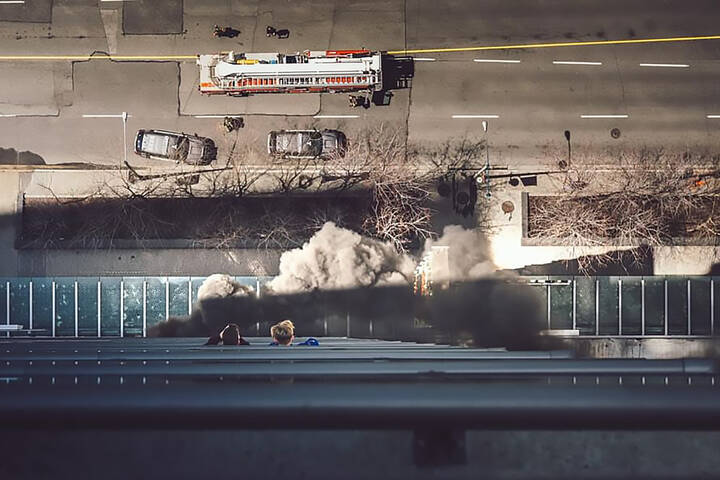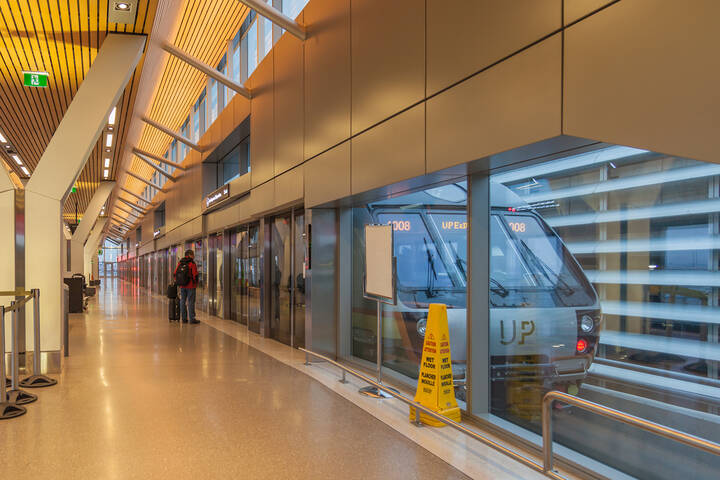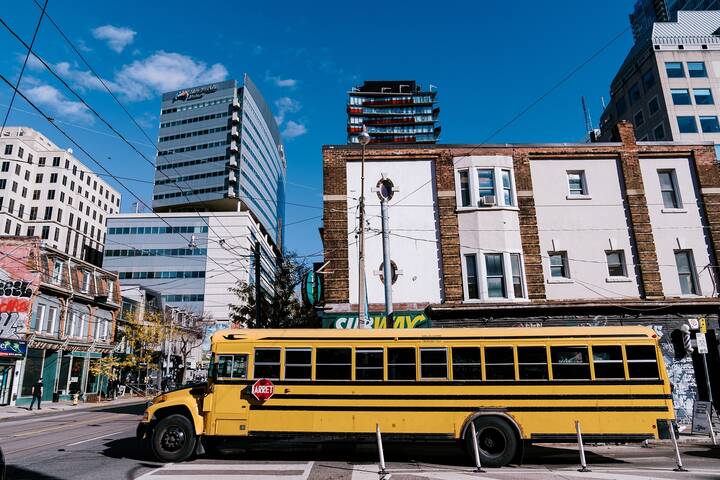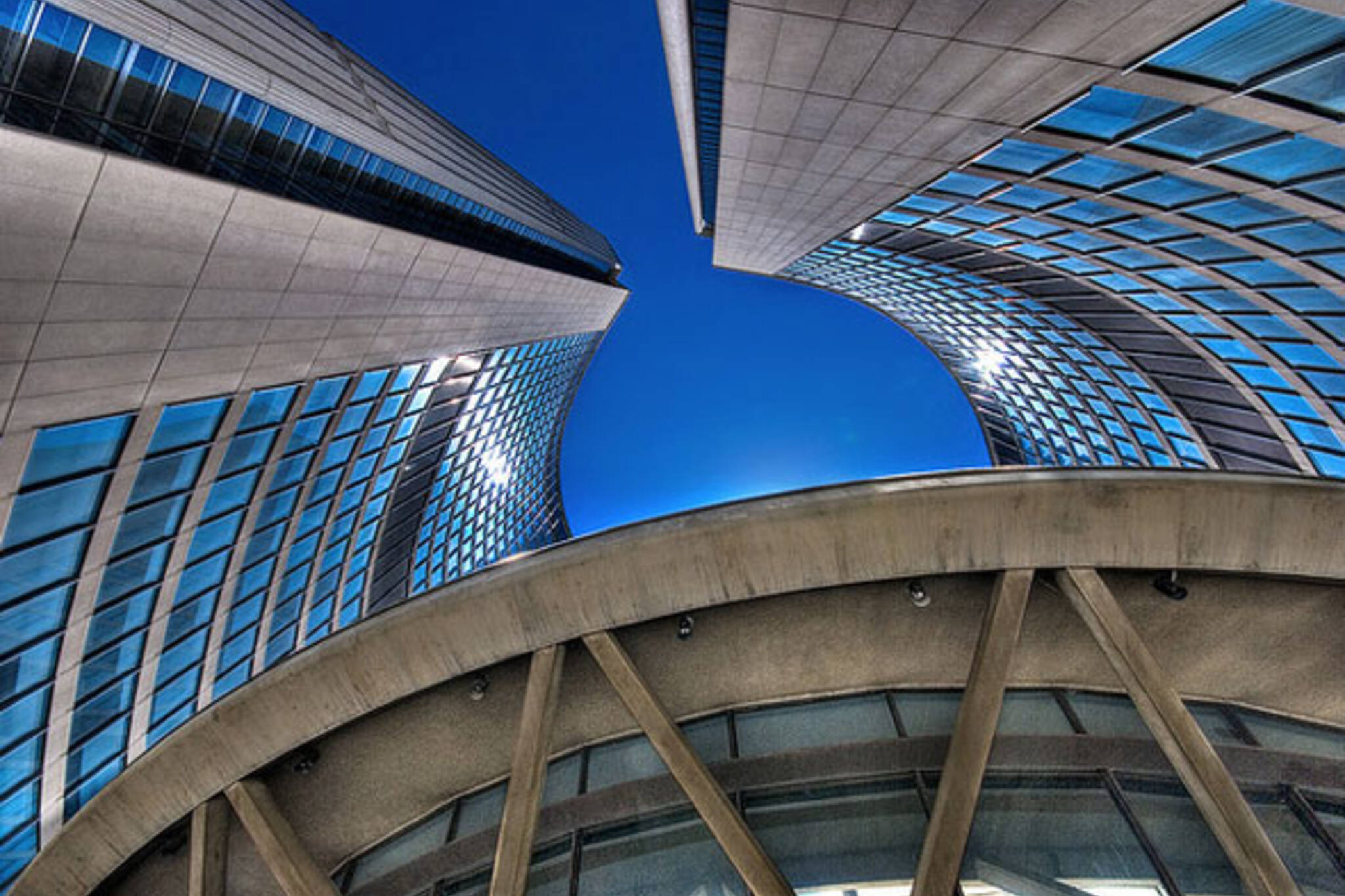
The top 10 buildings in Toronto
It was only in the last few decades that Toronto got it into its head to be any kind of paragon of urban excellence. For years previous, and pretty much from its inception, the city simply aspired to be one that worked, and it wasn't really until well into the last century that it could manage this feat on most days of the week. It's not surprising, then, that our best architecture isn't epochal and iconic as much as it's dignified and appropriate.
It's hard to make a list like this without lamenting the loss of so many contenders in the long, insecure years of Toronto's "second city" status - the gothic Toronto Board of Trade building that once sat on the NE corner of Front and Yonge; the outrageous Golden Lion storefront on King East; the Temple Building at Bay and Richmond. If more care had been taken with the transformation of Eaton's College Street into College Park, it might have made this list; ditto if we'd bothered maintaining half the buildings that once stood on the Exhibition grounds.
In the flame war this list will doubtless inspire, buildings missing from it will be a cause for complaint. While I can't speak for fellow contributors, I'd like to say that I want to live with Will Alsop's OCAD "tabletop" for a few more years before I make it a place on any list, and that much as I appreciate Frank Gehry's AGO redesign, I think it turned out to be quite the opposite of what we thought we were getting - an immensely serviceable space for art wrapped in an unexpectedly sedate exterior. How Toronto can you get?
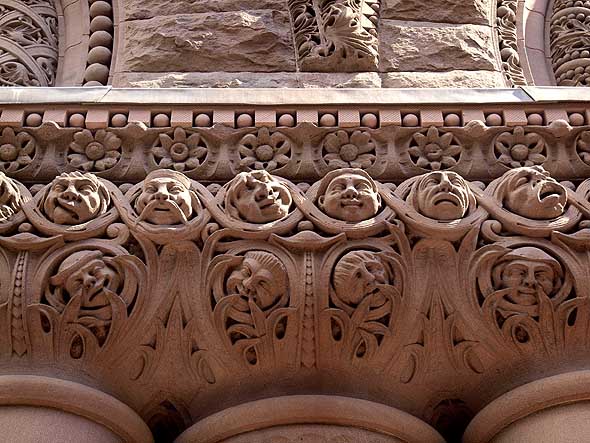
1. Old & New City Hall - Taken together as an ad hoc complex, it's hard to give our municipal centrepiece anything less than pride of place. Ignoring the voices bent on demolition was probably one of the best things we ever did, since leaving E.J. Lennox' red sandstone monolith in place next to Viljo Revell's still-futuristic replacement lets you take in, in one view, where we've been and where we're going.
Richardsonian Romanesque was Toronto's high style when we reached our first zenith of mercantile prosperity in the late 19th century, and you'll find examples all over the city, from U of T to the Annex to High Park and Rosedale. (You'll also find eerily similar city halls in Cincinnati and Minneapolis.) And while maintaining Lennox's sandstone exterior will be a perpetual burden in a city of road salt and ice, the periodic cleanups and restorations will give new generations a chance to appreciate the wild ornamental carvings and galleries of gargoyles and grotesques.
There are problems, of course; we still haven't figured out what to do with Old City Hall so as to let locals really appreciate it inside and out (without going to court, of course,) and New City Hall really only provides one friendly face to the city on its Queen Street side, presenting a cold wall of corrugated concrete to the rest of the city at its back. If I were a bit more paranoid, I'd think this was some sort of clever metaphor for the business going on inside.
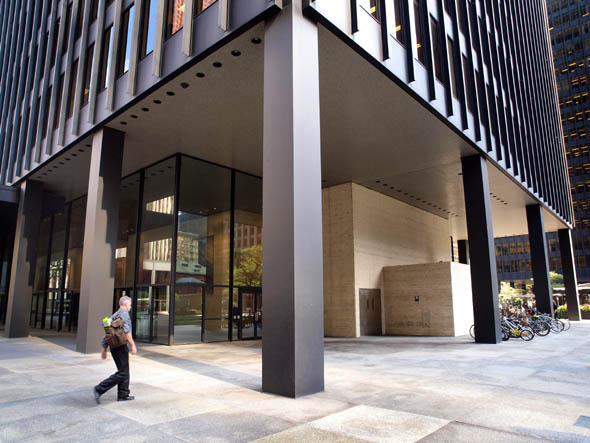
2. TD Centre - Around the time Toronto decided it wanted to be better than just OK, someone had the mad, wild idea to hire Mies van der Rohe to design one of the soaring new office towers replacing the Victorian and Edwardian storefronts and bank buildings in our business district. It probably would have stood out more if it wasn't duplicated three more times in subsequent decades - with diminishing success - but urban columnist Shawn Micallef still calls himself a fan: "This building is likely on everybody's list but though I've been looking at it for 10 years now, and it's 45 years old, it always seems perfectly new and sharp and absolutely in style when I see it."
"It's like a moment of order in all the (wonderful) chaos of the downtown skyline, and even as it's surrounded by taller buildings and many more of similar size now than when it appeared like a Kubrick monolith on Toronto's low colonial skyline, it still stands out. An office up high in here is the only thing that could lure me into a corporate job. Maybe."
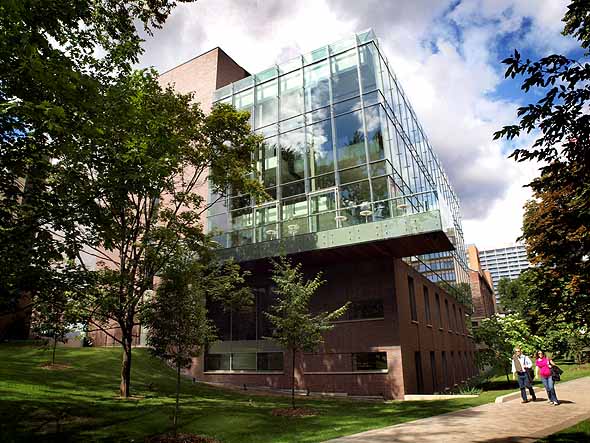
3. Royal Conservatory of Music - Originally the home of McMaster University, this Bloor St. landmark has undergone a long renovation in the shadow of the ROM's showy revamp next door, but the results, while far less radical, are much more successful, in the eyes of Phil and Margaret Goodfellow, authors of A Guide To Contemporary Architecture in Toronto.
"Complimenting the historical restoration of McMaster Hall," they write, "the contemporary expansion of the Royal Conservatory of Music creates an urban experience in this music school. The tall public atrium nestled behind McMaster Hall, acts as an entry court into Koerner Concert Hall whose white oak and plaster sideways culminate in the twisting wood ribbons that cascade behind the stage."
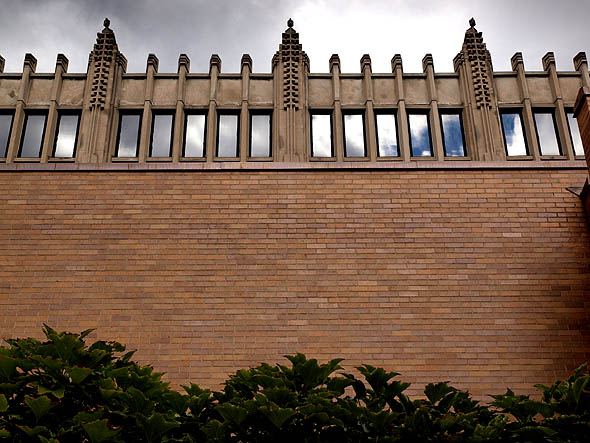
4. Massey College - Probably the best way to describe Ron Thom's small but very notable graduate college at U of T is postmodernism without the punch line - Thom's building evokes the gothic edifices all around it without a hint of cartoony quotation. That it was built years before this way-too-'80s style had its zenith explains a lot.
Phil and Margaret Goodfellow applaud it for doing so much in such a modest footprint: "Enclosed by residences and the social heart of the college, the quadrangle at Massey College continues the University of Toronto's tradition of cloister-like spaces with a modern twist. Ondaatje Hall, the dining hall for the college, is a spectacular space anchored by a hearth and top-lit by a clerestory visible from Harbord Street at night."
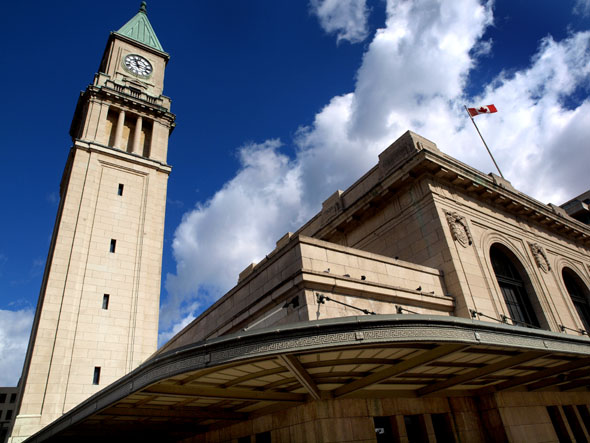
5. Summerhill Station - It's worthwhile to stand in front of this wonderfully restored and repurposed train station and recall that when it was built, this was the northernmost edge of urbanized Toronto; beyond its tracks were dirt roads and tony garden suburbs, cottages and sparse shantytowns like Earlscourt. It must have been a marvel then, and it still is today, even if it hasn't seen a passenger disembark since World War Two.
Chicago did Beaux Arts in a big way, Toronto not so much, which is why Summerhill Station stood out, even when it was at its lowest ebb just over a decade ago, its Venetian campanile clock tower vacant except for a mountain of pigeon shit. The Woodcliffe Corporation's restoration is a benchmark of preservation, from the clock tower refitting to the cleaning of the Manitoba limestone to the square and fountain outside. There are even persistent rumours that it might be returned to service as a train station, which is what Torontonians accustomed to diminished expectations refer to as "crazy talk."
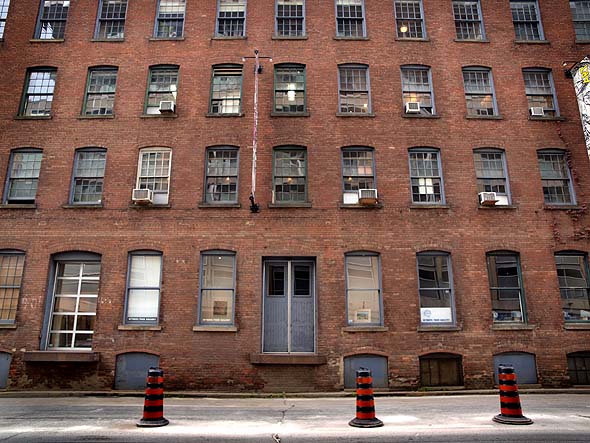
6. 401 Richmond West - Compared to anything else on this list, there's nothing physically remarkable about this nearly block-long red brick warehouse that presents Richmond Street with a rank of disused loading bays, but "meta-preservationist" Adam Sobolak thinks its excellence comes from its reincarnation as a creative centre: "Not that it's particularly ultra-unique or potboiler-spectacular either as an industrial vestige or as adaptive reuse (nor should it be); indeed, its de facto adaptive reuse was well underway when Margie Zeidler arrived on the scene."
"But by applying discipline and refinement to that well-underway process, what Zeidler - the landlord as an 'architect beyond architects' - did was a feat of cultural, conceptual, and marketing brilliance: she turned 401 Richmond into the living, breathing embodiment of Toronto-at-its-best as a Jane Jacobs/Richard Florida-friendly cultural-nexus utopia so many of us love, or love to hate, or whatever. Little wonder that it was one of the stars from day one of Doors Open - and all cynicism aside re the 'cultural class' concept, when it comes to organically respecting and maximizing our existing built environment, it is an example to learn from. In a sublimely 'Toronto' way.
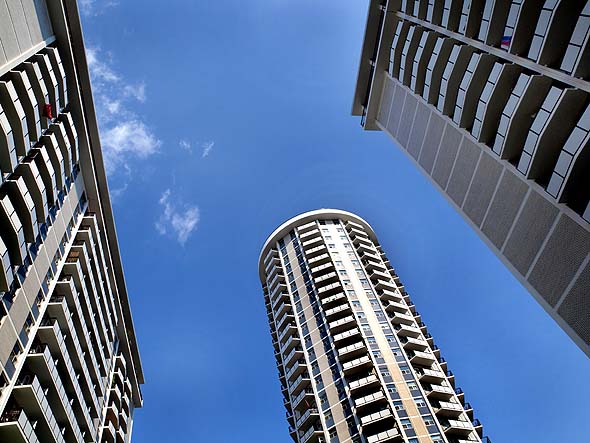
7. Village Green - "These four residential buildings from 1965 between Yonge, Alexander, Church and Maitland are some of the best kept apartment buildings from this era (including the round 'Vaseline Tower')," writes Shawn Micallef. "Many buildings put up at the time were built with this swinging vibe (St. James Town and others all over the city) but lost it over the years as owners began to neglect their property and installed harsh lighting or chain link fences.
"At the Village Green the grass is still very green, in the summers the fountains work (it must be like living in a Busby Berkeley film) and the units themselves are bigger than most condos are today. Because modernism is at an awkward, unloved stage in its lifespan, so much of it is neglected. Here we can see it as it was intended."
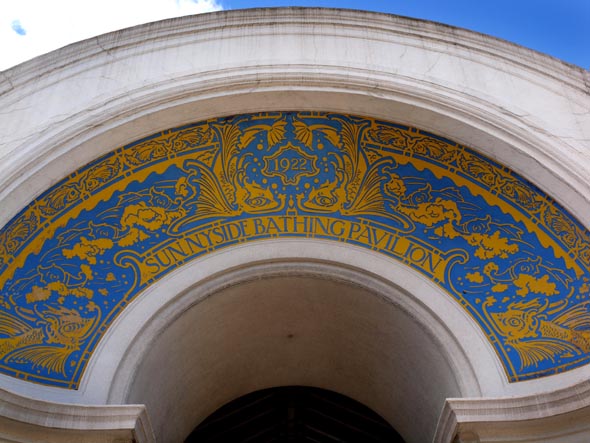
8. Sunnyside Bathing Pavillion - This Chapman & Oxley bauble sits all by its lonesome on a stretch of the western beaches cut off from the city by train tracks, Lake Shore Boulevard, and the Gardiner Expressway. The first two didn't actually make for much of a barrier, but the third did, when its construction wiped out the lakeside amusement park that once thrived between the Bathing Pavillion on one end and the Palais Royale on the other.
It emerges like a mirage from around a bend in the lakeside boardwalk or the Martin Goodman Trail, even when you're expecting to see it. It's a poignant reminder of the briefness of summer here, and archive photos of the adjacent beach, crammed with locals in bathing suits, underlines how Torontonians have always embraced the season with ferocity.
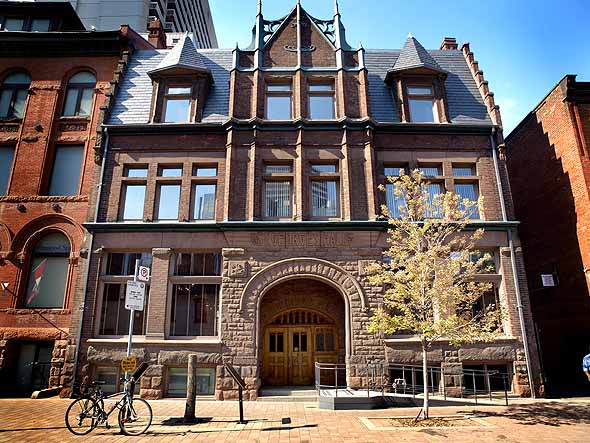
9. Arts & Letters Club - "This is the kind of old building Toronto should have more of," writes Shawn Micallef, "but when we were building this sort of thing, Toronto wasn't the kind of city that needed more than a few (Detroit and Montreal, on the other hand, have lots of this kind of stuff)."
"Inside the main hall the giant fireplace is like something out of Citizen Kane. If social media didn't fulfill the roll joining a 'club' used to (and if I thought I'd have time to go often enough to make it worth it), I'd become a member. If the Spoke Club down on King Street is currently fashionable, the Arts and Letters Club is eternal style."

10. Humber Bay Arch Bridge - Although not a building, just down the shore from Sunnyside is a structure that gave me hope that the city, every now and then, can make sure something truly excellent gets built. This gleaming white single span footbridge over the foot of the Humber River is probably my favorite piece of civic infrastructure in Toronto; why everything the city touches can't turn out this well only underlines that, from the moment the planning paper is written to the day the ribbon is cut, it's just a roll of the dice.
The two best things about the Humber Arch Bridge are basically the two things it isn't: 1) a merely utilitarian span connecting Etobicoke and Toronto, and 2) designed by Santiago Calatrava. Toronto does have a Calatrava or two - the Brookfield Place Atrium at BCE Place and a bridge over Mimico Creek, just a bit further west of the Humber Arch - but architects Montgomery & Sisam duplicated the same sense of soaring, skeletal, technical bravado that the Spanish architect is famous for, wildly surpassing even the grandest expectation of the municipal planning department.
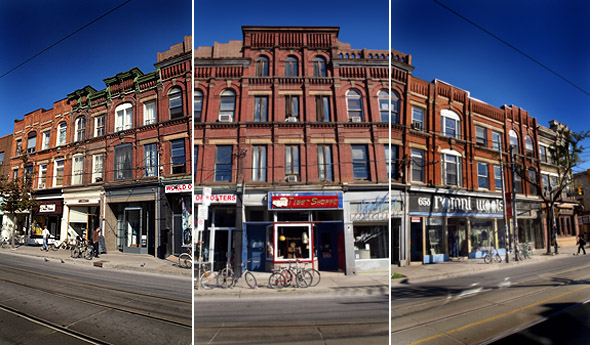
Honourable Mention: 652-672 Queen West block - There are more perfectly preserved Victorian commercial blocks in the city, but this stand of buildings between Tecumseth and Euclid on Queen West is probably my favorite. Unusual for the time, it's four stories tall at the centre - towering compared to most of the neighbourhood - and a showcase of red brick masonry, the supreme vernacular building material of Toronto.
The roofline is a testament to the wear and tear of decades and different landlords - well-preserved along one stretch, crudely repaired with mismatched bricks along another. Futurist Stewart Brand once wrote an influential book called How Buildings Learn; this block of Queen is an excellent illustration of how buildings endure.
See also: the top 10 landmarks in Toronto and the 10 ugliest buildings in Toronto.
Latest Videos
Latest Videos
Join the conversation Load comments
